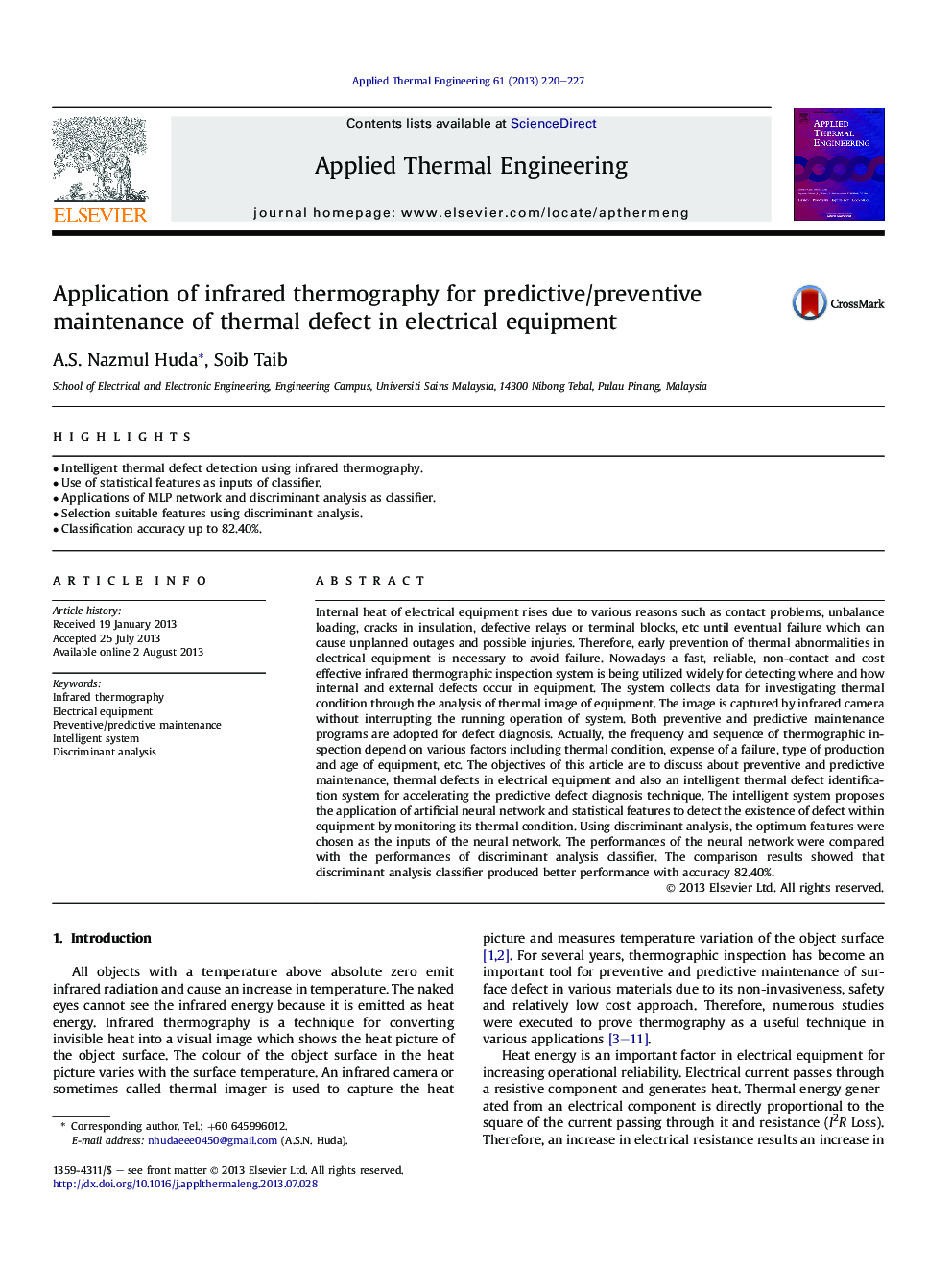| Article ID | Journal | Published Year | Pages | File Type |
|---|---|---|---|---|
| 646579 | Applied Thermal Engineering | 2013 | 8 Pages |
•Intelligent thermal defect detection using infrared thermography.•Use of statistical features as inputs of classifier.•Applications of MLP network and discriminant analysis as classifier.•Selection suitable features using discriminant analysis.•Classification accuracy up to 82.40%.
Internal heat of electrical equipment rises due to various reasons such as contact problems, unbalance loading, cracks in insulation, defective relays or terminal blocks, etc until eventual failure which can cause unplanned outages and possible injuries. Therefore, early prevention of thermal abnormalities in electrical equipment is necessary to avoid failure. Nowadays a fast, reliable, non-contact and cost effective infrared thermographic inspection system is being utilized widely for detecting where and how internal and external defects occur in equipment. The system collects data for investigating thermal condition through the analysis of thermal image of equipment. The image is captured by infrared camera without interrupting the running operation of system. Both preventive and predictive maintenance programs are adopted for defect diagnosis. Actually, the frequency and sequence of thermographic inspection depend on various factors including thermal condition, expense of a failure, type of production and age of equipment, etc. The objectives of this article are to discuss about preventive and predictive maintenance, thermal defects in electrical equipment and also an intelligent thermal defect identification system for accelerating the predictive defect diagnosis technique. The intelligent system proposes the application of artificial neural network and statistical features to detect the existence of defect within equipment by monitoring its thermal condition. Using discriminant analysis, the optimum features were chosen as the inputs of the neural network. The performances of the neural network were compared with the performances of discriminant analysis classifier. The comparison results showed that discriminant analysis classifier produced better performance with accuracy 82.40%.
